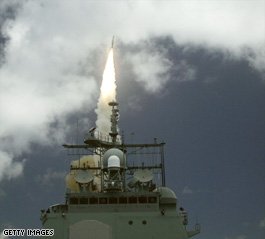The Washington Post had a excellent story yesterday by Marc Kaufman describing NASA’s intentions to increase the flight rate of the Space Shuttle program. This is remarkable, and as good an indication as any that NASA has not yet learned the lessons of its past.

According to the Post:
Although NASA has many new safety procedures in place as a result of the Columbia accident, the schedule has raised fears that the space agency, pressured by budgetary and political considerations, might again find itself tempting fate with the shuttles, which some say were always too high-maintenance for the real world of space flight.
A NASA official is quoted in the story:
“The schedule we’ve made is very achievable in the big scheme of things. That is, unless we get some unforeseen problems.”
The Post has exactly the right follow up to this comment:
The history of the program, however, is filled with such problems — including a rare and damaging hailstorm at the Kennedy Space Center last year as well as the shedding of foam insulation that led to the destruction of Columbia and its crew in 2003. . . “This pressure feels so familiar,” said Alex Roland, a professor at Duke University and a former NASA historian. “It was the same before the Challenger and Columbia disasters: this push to do more with a spaceship that is inherently unpredictable because it is so complex.”
John Logsdon, dean of space policy experts and longtime supporter of NASA, recognizes the risks that NASA is taking:
Every time we launch a shuttle, we risk the future of the human space flight program. The sooner we stop flying this risky vehicle, the better it is for the program.
Duke University’s Alex Roland also hit the nail on the head;
Duke professor Roland said that based on the shuttle program’s history, he sees virtually no possibility of NASA completing 13 flights by the deadline. He predicted that the agency would ultimately cut some of the launches but still declare the space station completed.
“NASA is filled with can-do people who I really admire, and they will try their best to fulfill the missions they are given,” he said. “What I worry about is when this approach comes into conflict with basically impossible demands. Something has to give.”
It is instructive to look at the 1987 report of the investigation of the House Science Committee into the 1986 Challenger disaster, which you can find online here in PDF (thanks to Rad Byerly and Ami Nacu-Schmidt). That report contains lessons that apparently have yet to be fully appreciated, even after the loss of Columbia in 2003. Here is an excerpt from the Executive Summary (emphasis added, see also pp. 119-124):
The Committee found that NASA’s drive to achieve a launch schedule of 24 flights per year created pressure throughout the agency that directly contributed to unsafe launch operations. The Committee believes that the pressure to push for an unrealistic number of flights continues to exist in some sectors of NASA and jeopardizes the promotion of a “safety first” attitude throughout the Shuttle program.
The Committee, Congress, and the Administration have played a contributing role in creating this pressure. . . NASA management and the Congress must remember the lessons learned from the Challenger accident and never again set unreasonable goals which stress the system beyond its safe functioning.
One would hope that the House Science Committee has these lessons in mind and is paying close attention to decision making in NASA. It would certainly be appropriate for some greater public oversight of NASA decision making about the Shuttle flight rate and eventual termination. Otherwise, there is a good chance that such oversight will take place after another tragedy and the complete wreckage of the U.S. civilian space program.
For further reading:
Pielke Jr., R. A., 1993: A Reappraisal of the Space Shuttle Program. Space Policy, May, 133-157. (PDF)
Pielke Jr., R.A., and R. Byerly Jr., 1992: The Space Shuttle Program: Performance versus Promise in Space Policy Alternatives, edited by R. Byerly, Westview Press, Boulder, pp. 223-245. (PDF)

